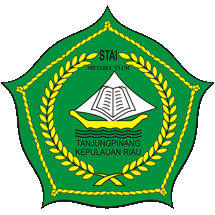Sebelum sumbit artikel Anda, silahkan melakukan pendaftaran dan mengisi biodata terlebih dahulu. Registerasi pendaftaran terdapat di tombol atas kanan halaman ini.
Journals
-
TOTALITAS
- Journal Title: TOTALITAS
- Initials: TOTALITAS
- Frequency: Diterbitkan 2 kali dalam satu tahun di bulan Agustus dan Februari
- Online ISSN: -
- Editor in Chief: Ahmad Fadhil Rizki, MH
- DOI: -
- Publisher: IAI Miftahul Ulum Tanjungpinang
TOTLITAS merupakan Jurnal yang diterbitkan Institut Agama Islam Miftahul Ulum Tanjungpinang. Jurnal ini merupakan jurnal Pengabdian Kepada Masyarakat yang ruang lingkup ilmunya multidisiplin. TOTALITAS Terbit 2 kali dalam setahun di bulan Juni dan Desember.
Indexed by:

-
Miftahul Ulum
Miftahul Ulum merupakan Jurnal yang diterbitkan Institut Agama Islam Miftahul Ulum Tanjungpinang. Miftahul Ulum ini sendiri mengangkat jurnal dengan tulisan yang ruang lingkup ilmunya adalah Pendidikan dan Ekonomi. JUNAMU Terbit 2 kali dalam setahun.
-
Tabir
TABIR-merupakan Jurnal yang diterbitkan Sekolah Tinggi Agama Islam Miftahul Ulum Tanjungpinang. Tabir ini sendiri mengangkat jurnal dengan tulisan yang ruang lingkup ilmunya adalah Pendidikan Agama Islam, Tadris Bahasa Inggris, Ekonomi Syariah dan Pendidikan Guru Madrasah Ibtidaiyah. Jurnal Tabir Terbit 2 kali dalam setahun.



